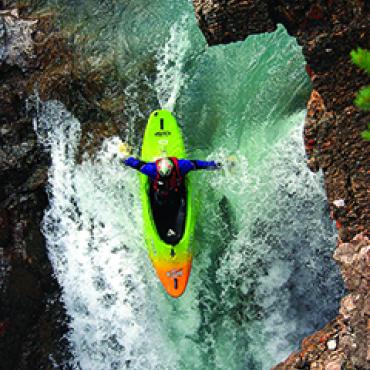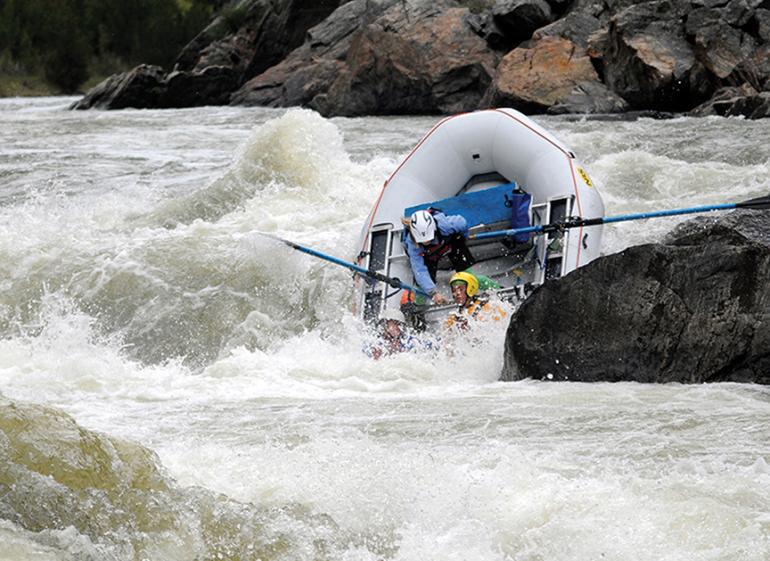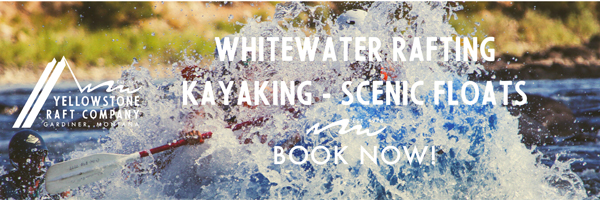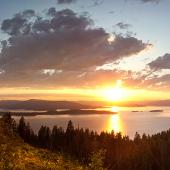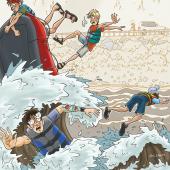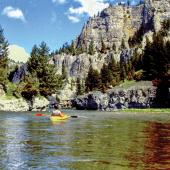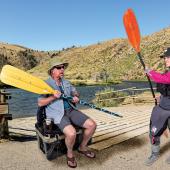Rapid Fire
A guide to running Bear Trap.
It’s Sunday at 7am. Under normal conditions I’d be off in the nether, stumbling through some primal log-sawin’ narrative. Today, however, I’m living the dream, and as I pull into Mama Mac’s under bluebird skies, my partner’s waiting, his outstretched hands and wide grin confirming my bliss. It’s going to be a good day.
After grabbing sandwiches and coffee, we’re off, heading high over Norris Hill to drop into the best wilderness day-trip southwest Montana has to offer: the incomparable Bear Trap Canyon. Today, we’ll be treated to the “standard” flow of 1,200 cfs, more than enough for an enjoyable whitewater experience.
This section of river can satiate a wide variety of craft and skillsets. For the advanced and expert kayaker, there’s no end to the large boulders, swirling eddy lines, and interesting slots awaiting a creative freestyle mindset. Intermediates will find lines available that complement skills honed on the Gallatin or Yellowstone and can pick and choose where they’d like to turn up the volume on all rapids, excepting the mighty Kitchen Sink.
We put in upstream of the powerhouse and enjoy the handful of smaller, technical rapids available at lower flows. It’s a great warmup and we’re already laughing aloud, wondering why we don’t get out on this stretch more often. There are several more small rapids and play opportunities before a large mid-stream boulder and the horizon line announce the first major rapid of the day: Whitehorse. Whitehorse has several lines, ranging from straightforward class III down the center-right to some clean, stacked class III+/IV down the left. All options are easy to scout by catching a large eddy on river left just above the entrance to the drop. After Whitehorse, the action cools down and the flora and fauna come to the fore. Cliff bands tower overhead, while raptors work the thermals.
This lead-up to the crux rapid of the run is my favorite section of Bear Trap. On river right, mountainous terrain drops precipitously into the river, covered in evergreen forest, interrupted only by large, broken chunks of ancient stone. From the left bank, the mountains rise again, only this time it’s sage and juniper that greet the wandering eye, amidst sun-bleached cliff bands and thirsty grassland reminiscent of the arid high-mountain desert. The contrast is surreal, with sparkling waters and blazing sun dancing between the two realms.
All too soon, the river necks down and funnels into the classiest of class IV drops, the legendary Kitchen Sink. There is an idyllic eddy at the head of the drop on river right, across from the towering cliffs that form the left bank, replete with a heavily used trail and several sub trails leading down to various vantage points throughout the rapid. This is a place to relish. Soak in the river, soak in the sun, and soak in the surroundings, because it doesn’t get more Montana than this. There is a fat, clean class IV line right down the middle, with either a left or right exit chute. This is the standard route, tried and true at all but the highest flows. For the intrepid creeker or skilled playboater, there are a multitude of large boulders, pillows, boofs, and surf holes to attempt. From high above, the possibilities are numerous and there are several markers in the rapid that can easily be spotted from river-level for those looking for more complex descents. In the end, paddlers pushing themselves will be wholly satisfied or humbled and those out for a romp will likely run three or more laps before heading on downstream to finish off the run.
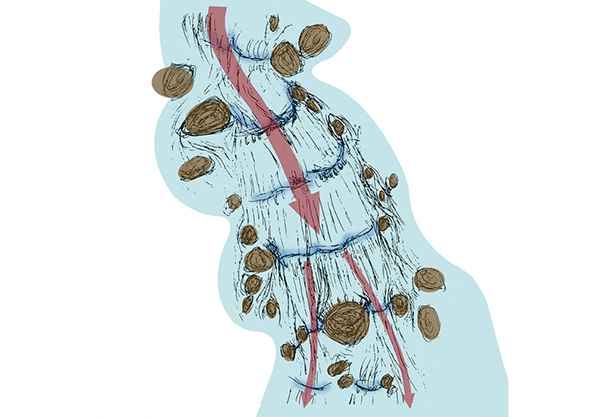 The Kitchen Sink: run it right or risk getting flushed.
The Kitchen Sink: run it right or risk getting flushed.
The rest of the rapids come quickly with plenty of class II+/III drops and the finale at Green Wave, a solid class III rapid with a nice line down the right ending in a smattering of stout recirculations. After Kitchen Sink, Green Wave doesn’t seem quite so threatening, but it’s more than enough punch to put the hurt on a lackadaisical paddler.

